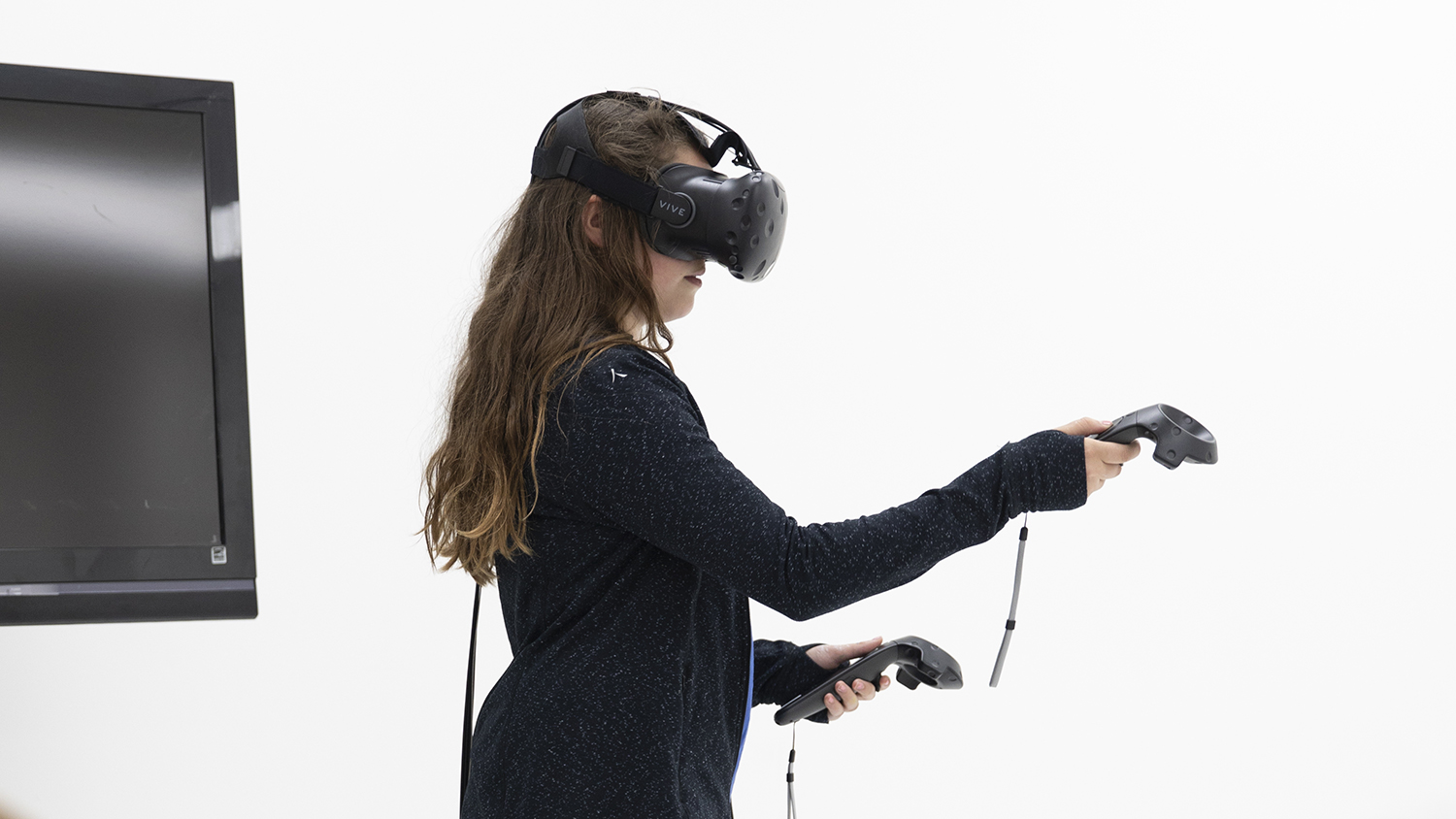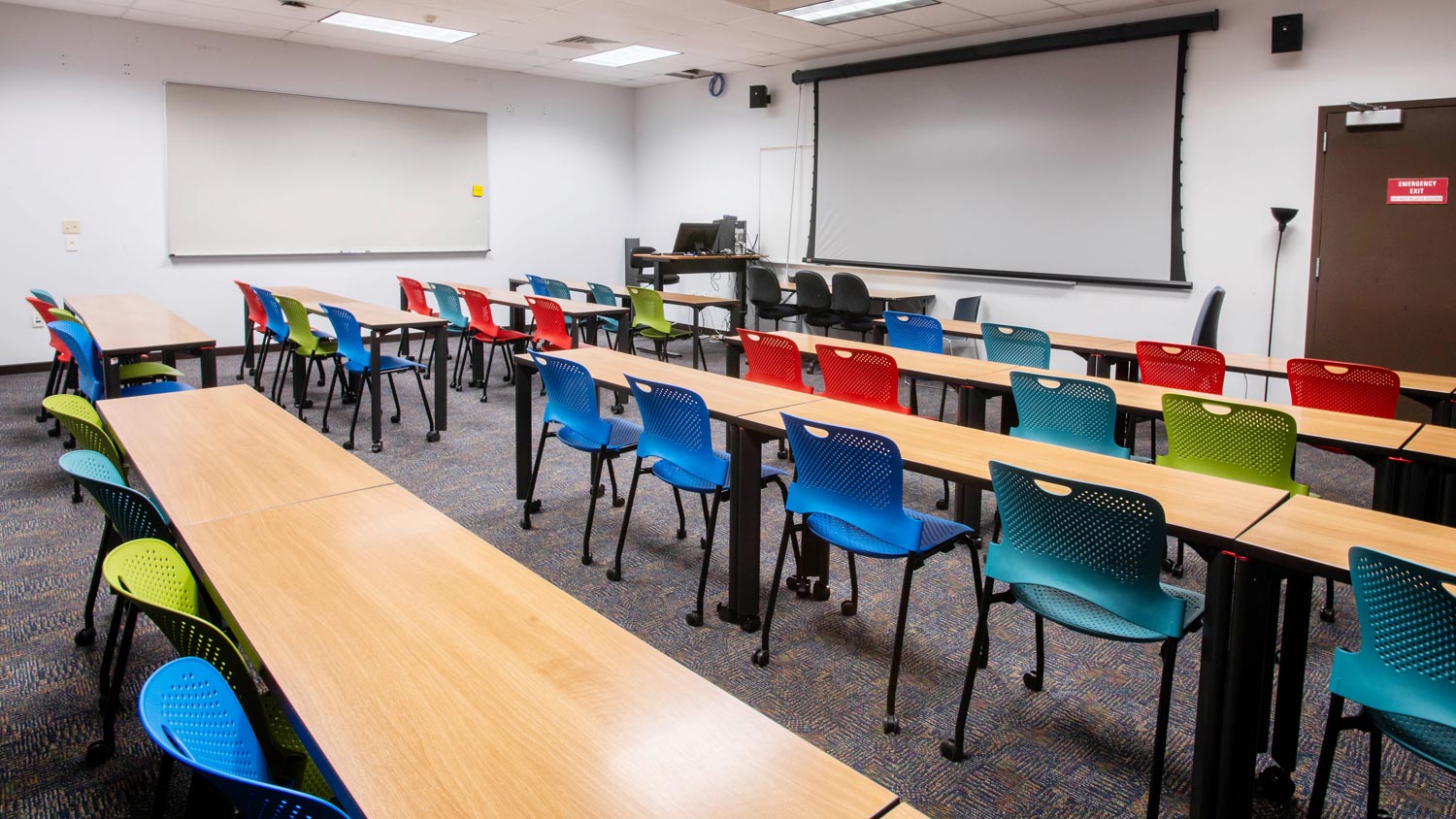3D Digital Design Minor
- RIT /
- College of Art and Design /
- Academics /
- 3D Digital Design Minor
Overview for 3D Digital Design Minor
This program is no longer accepting new student applications.
The 3D digital design minor provides a foundation in designing visual elements using three-dimensional digital software for a range of applications. Courses cover topics such as modeling, motion, lighting, materials, and rendering. Advanced electives explore real time design including topics related specifically to topology, textures, level of detail, and other techniques important to real time applications. Please note: Enrollment is based on available space and a portfolio review is required before acceptance into the minor.
Notes about this minor:
- This minor is closed to students majoring in 3D digital design.
- Posting of the minor on the student's academic transcript requires a minimum GPA of 2.0 in the minor.
- Notations may appear in the curriculum chart below outlining pre-requisites, co-requisites, and other curriculum requirements (see footnotes).
The plan code for 3D Digital Design Minor is 3DDD-MN.
Curriculum for 2024-2025 for 3D Digital Design Minor
Current Students: See Curriculum Requirements
| Course | ||
|---|---|---|
| Required Courses | ||
| DDDD-101 | Introduction to Modeling and Motion |
|
This course is an introduction to the representation of form and motion in three-dimensional software. The course focuses on the development of visual and verbal vocabulary as a means of exploring, developing, and understanding composition and motion with digital geometry and in virtual spaces. Topics include the basics of lines, planes, contour, transforming lines into form, composing images with a software camera, interaction of light and surface, perspective, resolution of geometry, and rendering. Perception and visual thinking are emphasized in the development of projects. Projects will include modeling organic and inorganic forms, composition, level of detail, creation of spaces and motion. Structured assignments develop skills in concept generation, basic form making, techniques for creating motion, and craftsmanship. Emphasis is placed on workflow, teamwork, and the technical and aesthetic aspects of each project. Lecture 2 (Fall). | ||
| DDDD-102 | Introduction to Visual Design |
|
This course is an introduction to the development of surface materials in three- dimensional software, using the basic concepts covered in Intro to Modeling and Motion. Principles of additive and subtractive color are developed as they relate to the interpretation of physical phenomena within a virtual world. The vocabulary expands to include the interaction of light and surface attributes including: color, relief, specularity, transparency, and more. Projects focus on using color, value and texture to enhance the representation of form and space. The basics of node based materials design is introduced. Additional techniques for UV layout are introduced. Concepts are introduced through lectures, discussions, demonstrations, research, assigned projects, and critiques. Assignments develop skills in surface design, lighting and rendering. (Prerequisites: This class is restricted to students who have completed DDDD-101 with a C or better or equivalent course.) Lecture 2 (Spring). | ||
| DDDD-201 | Modeling and Motion Strategies |
|
This course provides extensive coverage of methods for modeling where evaluation of the appropriate modeling method to use in various situations is key. The emphasis in the course is on problem solving. Modeling challenges of various types are incorporated into the projects. With these techniques students create complex models of organic and inorganic forms using many techniques. (Prerequisites: This class is restricted to students who have completed DDDD-101 with a C or better or equivalent course.) Lab 2 (Fall). | ||
| Electives | ||
| Choose two of the following: | ||
| DDDD-517 | Experimental Workshop |
|
The course focuses on implementing, advanced, newly developing ideas in three-dimensional computer graphics. The specific topic varies and is determined by the instructor. A specific course outline is provided each time the course is taught. Potential topics include the creation of interactive installations, game asset design, digital performances, cyber fashion, network art, locative media, scientific visualization, information visualization, event design, projection design, or any new area in digital design. This course has a subtopic and may be repeated with different subtopics; subtopics cannot be repeated. (Prerequisites: DDDD-206 or equivalent course.) Lecture 2 (Fall, Spring). | ||
| DDDD-523 | Hard Surface Design |
|
The course focuses on designing and constructing hard surface models including machinery, furniture, vehicles, electronics, and robots. Students explore the use of different modeling techniques in the process and are particularly interested in the flow of the topology within the geometry. Some attention is given to creating controls for moving the hard surface models. (Prerequisite: DDDD-201 or equivalent course.) Lecture 2 (Fall). | ||
| DDDD-526 | Physical Interface Design |
|
This course covers the use of basic electronics so that students can develop embedded systems or controllers for games, design environments with ambient intelligence, design interactive museum exhibits and point of purchase installations, or embed electronics in clothing. Students use micro controllers, sensors, switches, lights, and motors to implement their designs. Lecture 2 (Spring). | ||
| DDDD-527 | Real Time Design |
|
In this course students design levels for games or virtual worlds for a variety of applications. Once the design is complete, the design is implemented using high-end three-dimensional software. In many cases the projects will be large and will be executed by teams of students. Versioning systems will be used to keep track of the most recently developed assets. Models are imported into real time software engines for manipulation. (Prerequisite: DDDD-201 or equivalent course.) Lecture 2 (Fall Or Spring). | ||
| DDDD-528 | Simulating Natural Phenomena |
|
Students will learn to simulate gasses, liquids and forces as well as develop complex organic systems in natural environments. Students will employ particle systems, physics engines, l-systems, and software designed especially for developing richly detailed natural environments. The content of the course encompasses both modeling natural environments and also phenomena in motion, such has windstorms, fire, cloth, hair, fur, and water. (Prerequisite: DDDD-201 or equivalent course.) Lecture 2 (Spring). | ||






